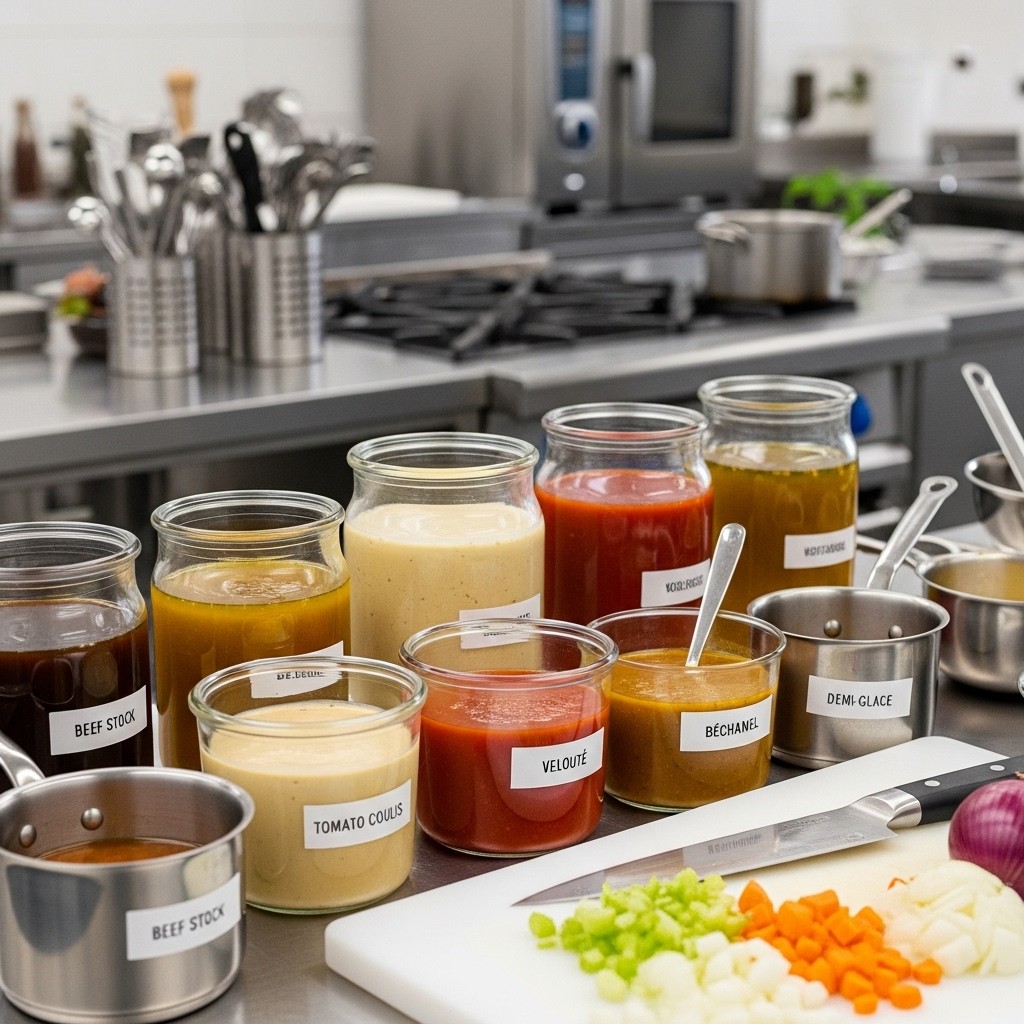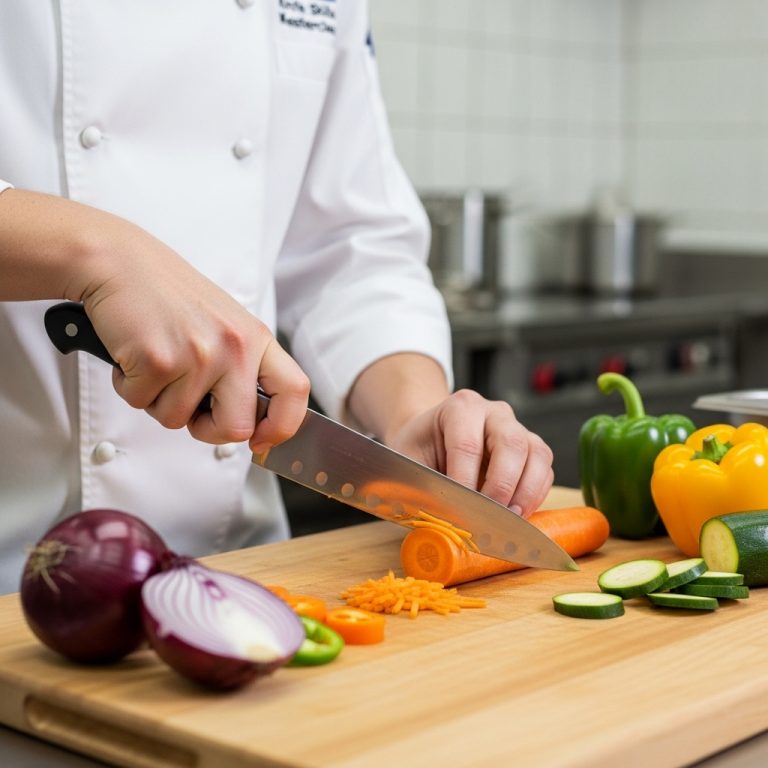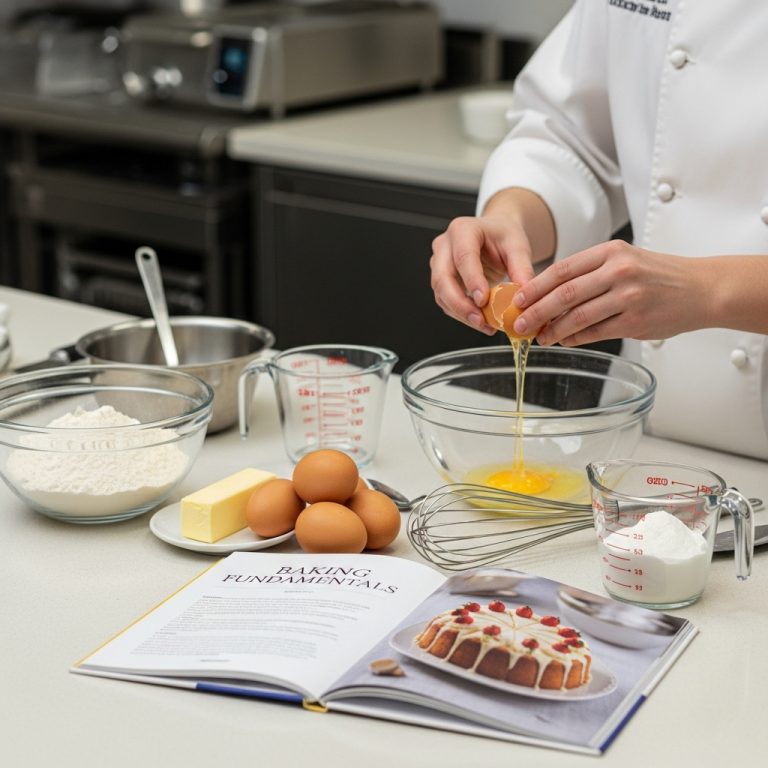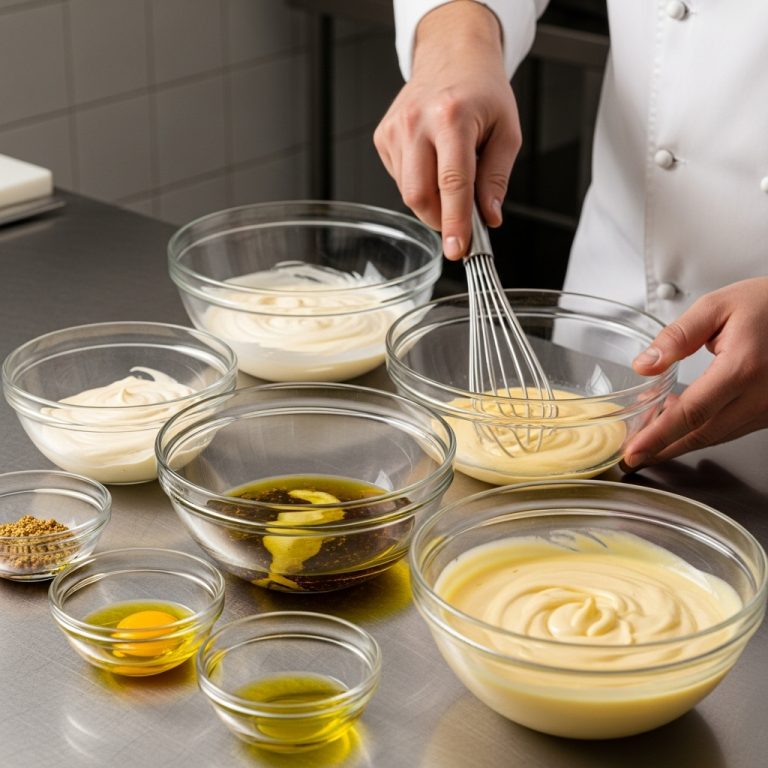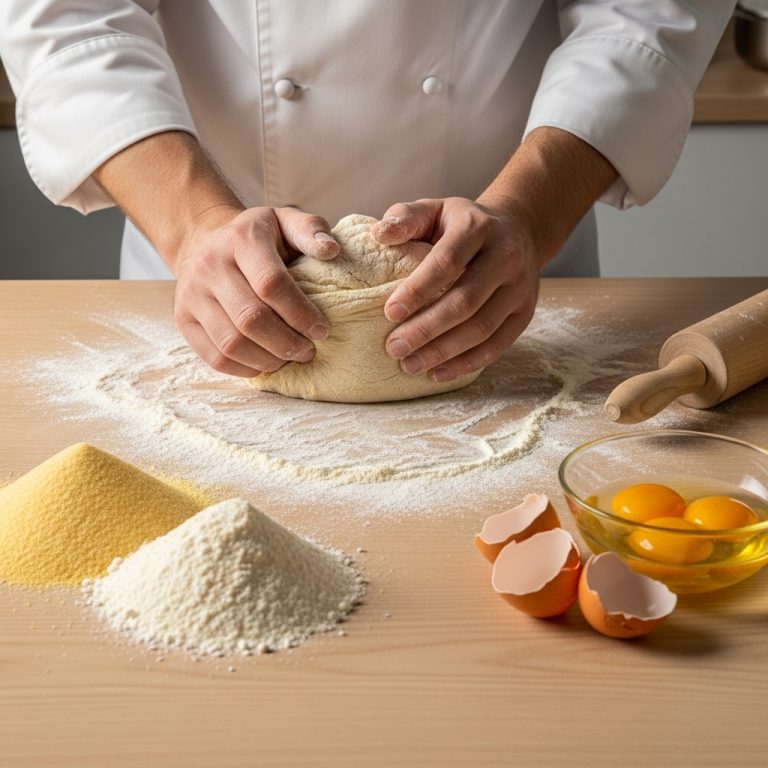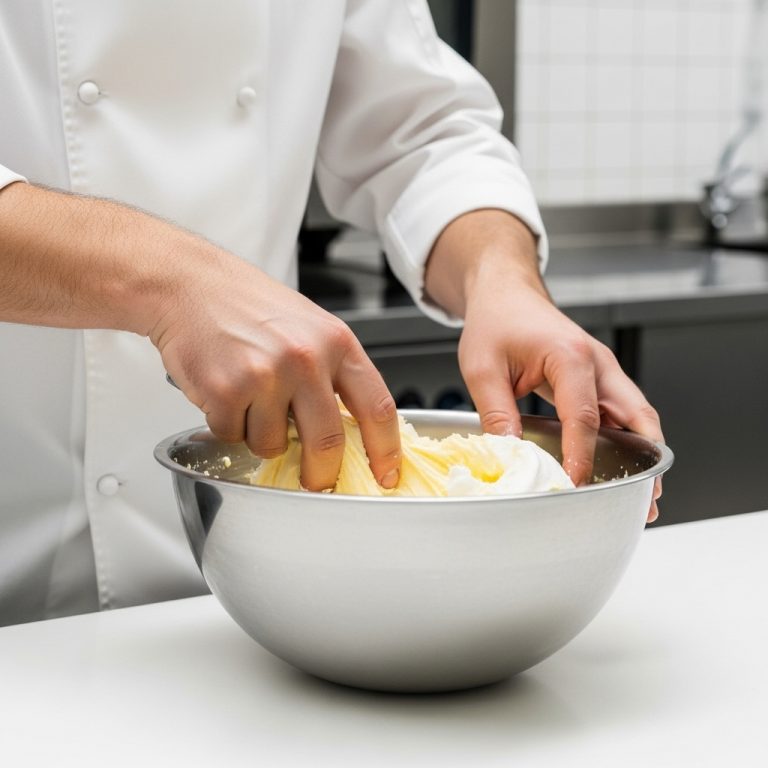Stocks and Sauces Foundations
Objective: To teach home cooks how to make basic stocks (vegetable and meat) and three essential sauces (béchamel, velouté, and espagnole), while understanding their uses and applications in various dishes.
Core Concept: Stocks and sauces are the foundation of many delicious dishes, providing flavorful bases for soups, stews, and gravies. They can elevate a dish from simple to extraordinary with minimal effort. In this lesson, we’ll explore how to create these foundational components in your kitchen and use them to enhance your cooking skills.
Tools & Setup: To begin, ensure you have the following tools and ingredients:
Tools:
– Large stockpot (20-30 quart capacity)
– Colander or fine mesh sieve
– Whisk or wooden spoon
– Measuring cups and spoons
– Knife and cutting board
– Blender or immersion blender
– Cheesecloth or fine mesh strainer
– Saucepan
– Storage containers with airtight lids (for stocks)
Ingredients:
For Vegetable Stock:
– 2 pounds mixed vegetable trimmings (carrots, celery, onions, etc.)
– 1 large onion, coarsely chopped
– 2 carrots, coarsely chopped
– 2 stalks celery, coarsely chopped
– 4 sprigs fresh parsley
– 1 bay leaf
– 1 teaspoon whole black peppercorns
For Meat Stock:
– 2 pounds beef or chicken bones (with meat attached)
– 1 large onion, coarsely chopped
– 2 carrots, coarsely chopped
– 2 stalks celery, coarsely chopped
– 4 sprigs fresh parsley
– 1 bay leaf
– 1 teaspoon whole black peppercorns
For Béchamel Sauce:
– 4 tablespoons butter
– 4 tablespoons all-purpose flour
– 2 cups milk
– Salt and white pepper, to taste
For Velouté Sauce:
– 4 tablespoons butter
– 4 tablespoons all-purpose flour
– 2 cups chicken or vegetable stock (prepared earlier)
– Heavy cream, as needed
– Salt and white pepper, to taste
For Espagnole Sauce:
– 4 tablespoons butter
– 4 tablespoons all-purpose flour
– 1 cup meat stock (prepared earlier)
– 1 cup tomato paste
– 1 cup dry red wine
– 2 cups water
– Salt and black pepper, to taste
Step-by-Step Practical:
1. Vegetable Stock: In a large stockpot, combine vegetable trimmings, chopped onion, carrots, celery, parsley, bay leaf, and peppercorns. Add 8 cups of water and bring to a boil. Reduce heat and simmer for 45-60 minutes. Strain through a cheesecloth-lined colander or fine mesh strainer into a clean stockpot. Discard solids. Cool, then store in airtight containers in the refrigerator until needed.
2. Meat Stock: In a separate large stockpot, combine beef or chicken bones with meat attached, chopped onion, carrots, celery, parsley, bay leaf, and peppercorns. Add 8 cups of water and bring to a boil. Reduce heat and simmer for 2-3 hours, skimming off any impurities that rise to the surface. Strain through a cheesecloth-lined colander or fine mesh strainer into a clean stockpot. Discard solids. Cool, then store in airtight containers in the refrigerator until needed.
3. Béchamel Sauce: In a saucepan, melt butter over medium heat. Whisk in flour and cook for 1-2 minutes, stirring constantly to avoid browning. Gradually whisk in milk, bringing mixture to a simmer. Cook until thickened, about 5 minutes. Season with salt and white pepper.
4. Velouté Sauce: In a saucepan, melt butter over medium heat. Whisk in flour and cook for 1-2 minutes, stirring constantly to avoid browning. Gradually whisk in prepared vegetable or chicken stock (depending on your preference) and bring mixture to a simmer. Cook until thickened, about 5 minutes. Season with salt and white pepper. Stir in heavy cream to desired consistency.
5. Espagnole Sauce: In a saucepan, melt butter over medium heat. Whisk in flour and cook for 1-2 minutes, stirring constantly to avoid browning. Gradually whisk in meat stock, tomato paste, red wine, and water. Bring mixture to a simmer and cook until thickened, about 10-15 minutes. Season with salt and black pepper.
Culinary Science Insight: Stocks form the base for many sauces, providing depth of flavor and body. Meat stocks use bones and meat for collagen and gelatin, which contribute to a richer texture. Vegetable stocks create lighter bases for sauces, perfect for vegetarian dishes. Roux (butter and flour) in sauces helps thicken and add body without altering the flavor.
Pro Tips & Variations:
– For a quicker béchamel sauce, substitute prepared milk with condensed cream of mushroom soup.
– To enhance Velouté Sauce, add cooked seafood or chicken to create a rich seafood bisque or poultry velouté.
– Espagnole Sauce can be further modified by adding herbs, spices, or additional ingredients like mushrooms for a demi-glace sauce.
Homework / Practice: Prepare one of the three sauces from this lesson and use it as a base for creating a delicious dish. Experiment with variations to find your favorite version. Share your creation with friends or family and enjoy the fruits of your labor!
Reflection: How did you feel about making stocks and sauces from scratch? Did you notice any differences in taste compared to store-bought versions? What variations did you try, and how did they affect the final dish’s flavor? Keep experimenting with these foundational skills, and soon you’ll be a sauce master!

